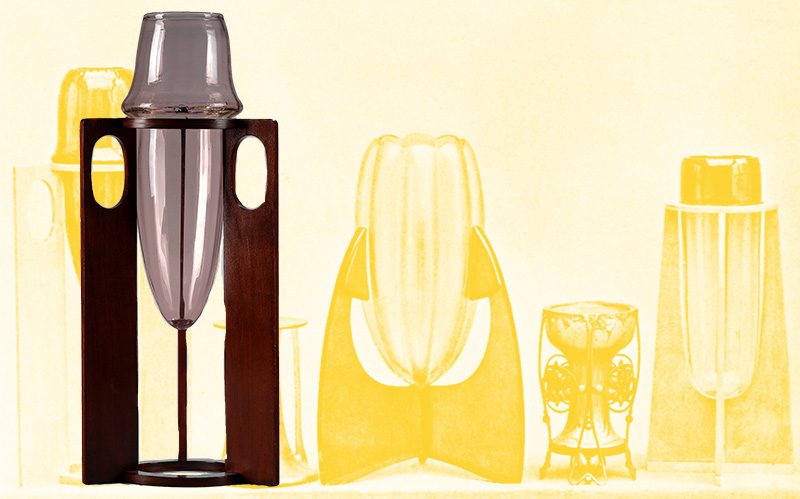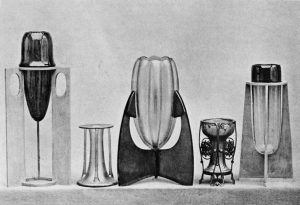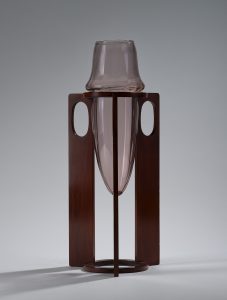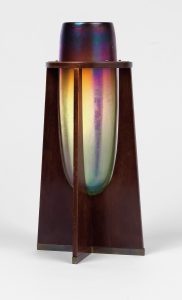
rigorous lines – many nuances – great refinement
The influence of Japanese style is clearly visible in the design of the “Vase Mounted in a Wooden Frame” made by Josef Hoffman in the late 1890s. The vase reflects the search, in fin-de-siècle Vienna, for a means with which to combine new aesthetic sophistication with the use of exotic artistic materials. One such vase will be offered for sale in the Jugendstil Auction at Dorotheum on 7 December 2020.
“Japan has freed us from the curse of monumentality […]. The gifts of East Asia were dreams come true. The influence started with the smallest detail and eventually led to a revision of the concepts of man, nature and art, changing them altogether.”When the Viennese architect Josef Frank wrote these lines in the 1930s, he was summarising an era defined by the leitmotif of giving “to every age its art” and “to every art its freedom” – the motto of the Vienna Secession association of artists.
Exhibited at Secession
It was also at the Secession that the vases in wooden stands, made both in the Loetz glassworks and by Meyr’s Neffe in Adolf, Bohemia, were exhibited for the first time. Josef Hoffmann had designed them for the Bakalowits company in late 1899. It is no coincidence that the vases celebrated their premiere at the influential 8th Exhibition of the Vienna Secession in 1900, since the design reveals, among other things, the influence that the Scottish Arts and Crafts movement, led by Charles Rennie Mackintosh, had on Josef Hoffmann. Members of the movement were invited to participate in the Secession exhibition, where they furnished their own hall.

The exhibition was also inspired by the elegant logic of Wiener Werkstätte artists. Koloman Moser wrote in 1916/17 in “Mein Werdegang”:
“For the first time you saw modern interiors furnished according to a new Viennese taste […] And our work was neither Belgian nor English nor Japanese, but Viennese …”
The vase in a wooden frame

Schätzwert € 15.000 – 25.000
The vase in a wooden frame offered at Dorotheum’s upcoming Jugendstil Auction is an excellent example of the appreciation of Japanese art. This approach cropped up in Vienna at a time when the conviction was spreading that art is not only intended for representation á la Ringstrasse and for museums, but also serves to shape private and public life. This aim was realised in the Japanese home and in the life of its residents as a kind of Gesamtkunstwerk.
Gesamtkunstwerk

erzielter Preis € 36.552
Josef Hoffmann’s desire to “work like the Japanese” manifested itself early on. As a teacher at the School of Arts and Crafts, he taught “in the Japanese way”, as Ludwig Hevesi already aptly put it back then. The commitment to manual work was particularly well represented in the work programme of the Wiener Werkstätte: “We want to do what the Japanese have always done, and no one could imagine machine-made arts and crafts in Japan.”
simplicity, rigor, elegance
The simplicity, rigor, elegance and the abandonment of symmetry are combined in this almost floating vase in a wooden frame with the typically Japanese gift of stringency: an art of saying more with less.













